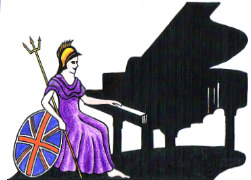Piano Removals in Northampton Northamptonshire NN4 byLSM Piano Removals

UK Piano Page


Fully insured piano removals throughout the UK and Europe
Upright and grand pianos of all sizes catered for
We have an extensive range of piano moving equipment including special sized covers grand piano shoes etc
Short or long term storage
All staff are fully trained in all aspects including up and down stairs
Please telephone 01604 766455 or 0787 969 8925 for a free quotation
City of London, London W6
England
W6-Hammersmith piano removals and disposals.
City of London, London SE1
England
Southwark piano moving and disposal in SE -
Haringey, London N15
England
We provide piano relocation ,piano moving and
Newham, London E6
England
London borough of Newham piano removals and piano
Ealing, London W5
England
Ealing piano moving and disposal, West London and
Music Festival for performers and guests Our 10th
18-06-2022 12:30PM
The Morecambe Bay Piano Group was set up to extend
11-12-2021 01:00PM
The Morecambe Bay Piano Group was set up to extend
08-01-2022 01:00PM
The Morecambe Bay Piano Group was set up to extend
12-02-2022 01:00PM
Tuning Temperaments
How many piano tuning temperaments are there?
There are countless variations, but most fall within three major categories;
1. Meantone, which generally concentrated the dissonance into a few unusable intervals (often called "wolf" intervals), so that the others could be Just. These are often called "restrictive" tunings, since there are certain intervals that are not usable. Good intervals are really good, bad ones are really bad. The Meantone era was approx. 1400-1700
2. Well-Temperament, which gives more consonance to the most often used keys, and more dissonance to the lesser used ones. Though not equal, these tunings are "non-restrictive" because all intervals can be used. The intervals range from Just to barely acceptable. Well-temperament refers to a genre, not a specific tuning. The Well-Tempered era is approx. 1700-1880.
3. Equal Temperament, which spreads the dissonance equally among all intervals.
There is no difference in consonance or dissonance between any keys, thus, there are no good ones or bad ones. Equal temperament represents a complete average. Dates of its acceptance are debated, but there is ample evidence that it was widely available by 1900 and is the predominate tuning on keyboards, today.
r.